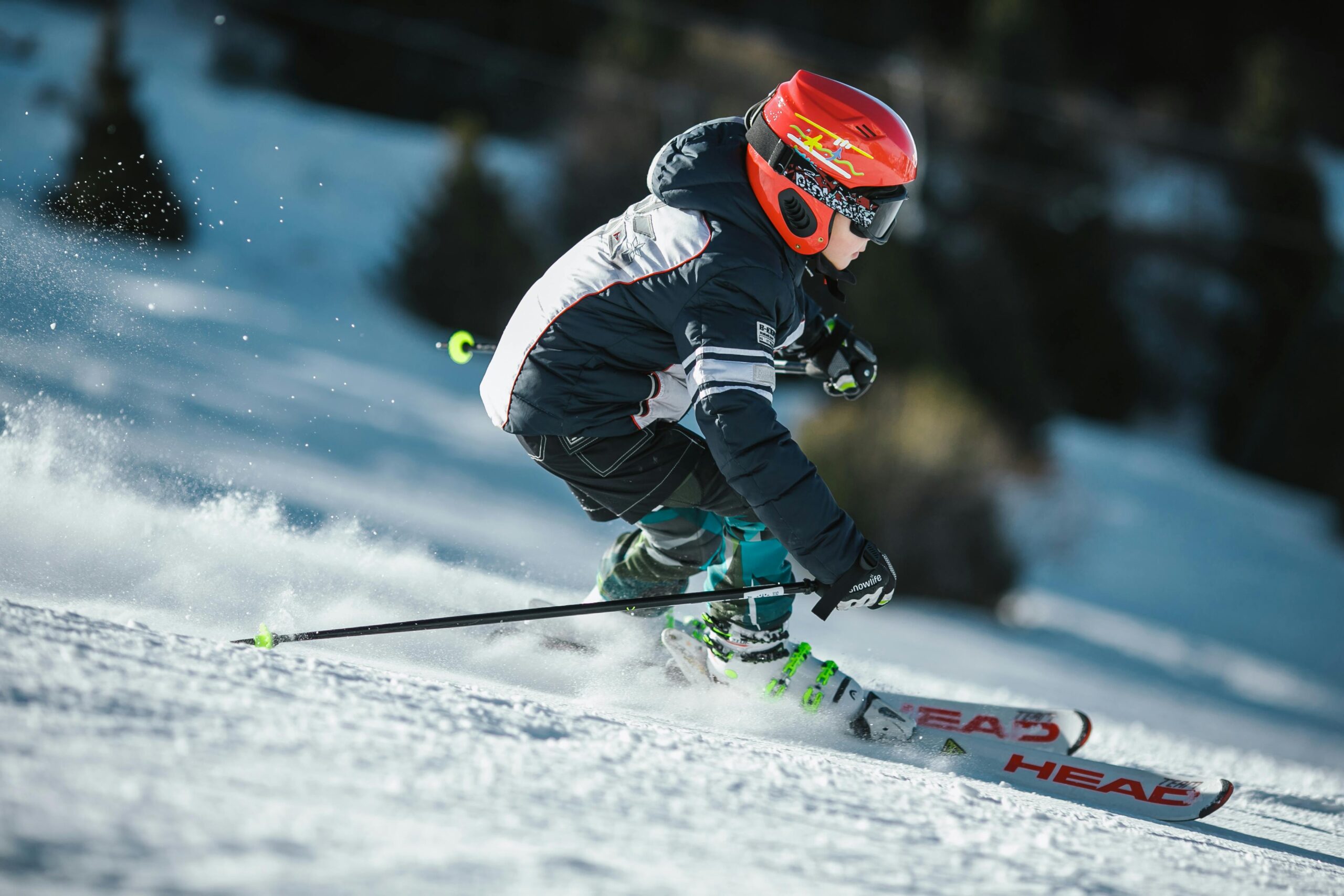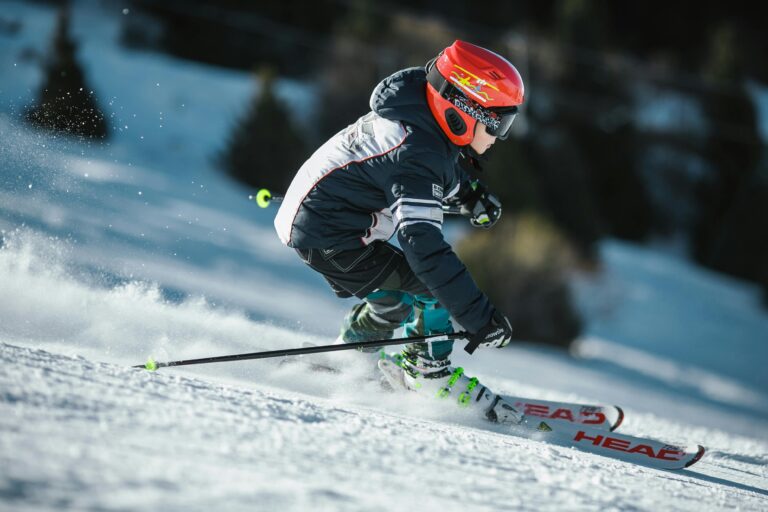Nestled in the heart of the Rocky Mountains, Grand Lake, Colorado is a hiker’s paradise. With its breathtaking natural beauty – think alpine lakes and rugged terrain – it’s a place that beckons adventurers and nature lovers. Stick to well-trodden trails or venture off the beaten path, Grand Lake hikes offer unforgettable experiences. But amidst all this allure, meticulous planning and prioritizing safety is crucial.
This guide helps you explore diverse hiking opportunities in Grand Lake while reminding you to be prepared and respect the ever-changing mountain environment. So come on, let’s discover the charm of Grand Lake’s trails and ensure your adventure is both safe and memorable in this incredible Rocky Mountain gem!
Getting to Grand Lake
When traveling to Grand Lake, Colorado, there are a few things to consider. Here’s a breakdown:
Best Transportation Options
- Car: If you’re in Colorado or nearby, driving is your best option. Take I-70 to US-40, and you’ll be in Grand Lake. Make sure your car is ready for mountain driving, especially in winter.
- Denver International Airport (DEN): For long-distance travelers, DEN is the biggest nearby airport. Rent a car or take a shuttle to Grand Lake. It’s about 120 miles away, and the drive takes 2.5 to 3 hours.
- Shuttle Services: If you prefer not to drive, there are shuttle services between DEN and Grand Lake. Reserve your spot in advance.
Proximity to Cities and Airports
If you’re visiting the Grand Lake hiking trails, you must know how to get there from the airport. Here are the two main options tourists usually go for:
- Denver, Colorado: Grand Lake is about 100 miles west of Denver. Easily reach it by car or shuttle.
- Colorado Springs, Colorado: If you’re coming from the south, Colorado Springs is about 190 miles southeast of Grand Lake.
Tips for Traveling to the Area
Grand Lake weather can be unpredictable, especially in winter. Check the forecast and be prepared for snow and cold temperatures. Snow chains or a 4WD vehicle might be necessary.
Furthermore, Grand Lake offers hiking, fishing, boating, and snow sports, so bring the right gear.
Also, Grand Lake is next to Rocky Mountain National Park. Check hours, fees, and regulations if you plan to explore, and if you want to, you can also look for other local events!
Must-Visit Hiking Trails in Grand Lake
It’s important for you to also know some info about hiking trails around the Grand Lake, Colorado area. We’ve got different categories based on the natural areas or parks where these trails are located. Let’s dive in!
- Rocky Mountain National Park Trails: This place is famous for its breathtaking mountain scenery and hiking trails. If you’re up for it, check out the Emerald Lake Trail. It’s a gorgeous trail leading you to the picturesque Emerald Lake, with stunning Rocky Mountain views along the way. Another gem is the Sky Pond Trail, which takes you to the serene alpine lake nestled amidst towering peaks. And if you’re looking for a shorter hike suitable for the whole family, the Adams Falls Trail leads you to a scenic waterfall.
- Indian Peaks Wilderness Area Trails: This protected wilderness area offers rugged terrain and pristine wilderness. Take a leisurely stroll on the Monarch Lake Loop Trail for some lovely lake views. For a more challenging hike with panoramic views, go for the Pawnee Pass Trail. And don’t miss the Crater Lake Trail, leading you to an alpine lake nestled in a stunning cirque.
- Arapaho National Forest Trails: The vast Arapaho National Forest has something for everyone. Check out the Cascade Falls Trail, where you can enjoy a beautiful waterfall in a forested setting. For a more strenuous adventure, the Mount Ida Trail offers panoramic views of the surrounding landscape. And if you’re up for a high-altitude gem, the Columbine Lake Trail takes you to the picturesque Columbine Lake.
- Never Summer Wilderness Area Trails: If you’re seeking rugged and remote hiking experiences, the Never Summer Wilderness Area won’t disappoint. The Baker Gulch to Bowen Pass Trail offers a challenging backcountry experience, crossing Baker Gulch and reaching Bowen Pass. If you’re in the mood for a pristine alpine lake, the Parika Lake Trail is the one for you. And for those up for a challenging trek with fantastic views, the Mount Nimbus Trail is a must-do.
- Grand Lake Area Local Trails: These trails are located around the town of Grand Lake and offer various options. Enjoy pleasant lakeside views on the East Shore Trail. If you’re planning a longer adventure, the North Inlet Trail gives you access to the surrounding wilderness. And for a more secluded hiking experience, you’ll love the Onahu Creek Trail.
These trails cater to different abilities and preferences, so make sure to plan your trip accordingly. Consider factors like trail difficulty, weather conditions, and your own fitness levels before embarking on these hikes.
Difficulty Levels and Trail Preparations
When planning a hike, consider these important factors for a safe and enjoyable experience:
Trails by Difficulty Levels
- Beginner Trails: Short, well-marked, and relatively flat, perfect for new hikers or those seeking an easy hike.
- Intermediate Trails: Longer with some elevation gain, uneven terrain, rocks, or roots. Suitable for experienced hikers with reasonable fitness.
- Advanced Trails: Rugged terrain, steep ascents and descents, and rocky sections, requiring experienced hikers with route-finding skills.
Necessary Permits and Passes
Some trails, especially in national parks, may require permits to manage usage and ensure safety. Before hiking, find out if your trail requires permits or passes.
You’ll need to get permits in advance, considering daily or seasonal limits. Lastly, always carry proof of your permit or pass while hiking.
Essential Gear and Packing List
- Wear comfortable hiking boots or shoes with good traction.
- Dress in moisture-wicking layers suitable for weather conditions, including a rain jacket or windbreaker.
- Carry a detailed map, compass, or GPS device.
- Choose a comfortable one with adjustable straps.
- Carry enough water or a filtration system.
- Pack snacks and a meal for longer hikes.
- Include bandages, antiseptic wipes, pain relievers, and personal medications.
- Carry a whistle, a headlamp with extra batteries, and a multi-tool.
- Use sunscreen, sunglasses, and a wide-brimmed hat.
- Consider carrying a space blanket, fire-starting tools, and a signaling device.
- Bring a trash bag and follow Leave No Trace principles.
- In winter, pack warm clothing, microspikes, or snowshoes if needed.
Remember, planning ahead and being prepared will ensure a memorable hiking experience!
Weather and Best Time to Hike
Understanding the changing weather patterns in Grand Lake, Colorado, is crucial for safe outdoor activities like hiking. Here’s an explanation of this topic, including ideal hiking seasons and precautions for extreme weather:
Understanding Changing Weather Patterns
Grand Lake, Colorado, experiences a wide range of weather conditions throughout the year due to its high elevation in the Rocky Mountains.
- Summer (June to August): This is the most popular time for hiking, with generally warm and sunny days. However, afternoon thunderstorms are common, so hikers should plan morning outings and be prepared for sudden weather changes.
- Fall (September to October): Fall offers crisp and cool hiking weather with colorful foliage. However, temperatures can drop quickly, especially at higher elevations.
- Winter (November to March): Winters are cold and snowy, making hiking challenging and requiring specialized equipment. Trails may be inaccessible without snowshoes or cross-country skis.
- Spring (April to May): Spring sees melting snow and increased water flow in streams. Trails can be muddy, and higher elevations may still have snow.
Ideal Seasons for Hiking
- Summer and Early Fall: These are generally the best seasons for hiking due to milder temperatures and accessible trails. However, be cautious of afternoon thunderstorms, which can lead to lightning strikes in the high mountains.
- Fall: If you enjoy cooler temperatures and colorful foliage, fall is a great time for hiking, but be prepared for temperature fluctuations.
- Winter: Only experienced hikers with appropriate winter gear should attempt hiking in winter. Snowshoeing and cross-country skiing are popular activities.
- Spring: Spring can be a challenging time due to muddy and snow-covered trails. Lower elevations may be more accessible.
Precautions for Extreme Weather Scenarios
- Lightning: In summer, afternoon thunderstorms can bring lightning. Avoid exposed ridges and summits during storms. Seek shelter in a safe location and wait for the storm to pass.
- Snowstorms: In fall and winter, be prepared for sudden snowstorms. Carry extra clothing layers, have a map and compass, and consider avalanche safety if hiking in snow-prone areas.
- Extreme Cold: In winter, temperatures can drop significantly. Dress in layers, including insulating and waterproof clothing, and carry emergency supplies like a space blanket.
- Strong Winds: The mountains can experience strong winds. Secure gear and be cautious when hiking near cliffs or exposed areas.
Always check the weather forecast before hiking, and consider local advice and trail conditions. Inform someone of your hiking plans, including your expected return time, especially if you venture into more remote areas. Safety should be a top priority when exploring the changing weather patterns of Grand Lake, Colorado.
Day Trips and Nearby Excursions
To enhance your hiking adventures in Grand Lake, exploring nearby places is a great idea. Here’s a breakdown:
One-Day Excursions
Grand Lake offers fantastic hiking opportunities, but there are also nearby places worth checking out within a day’s reach. Take a break from hiking and explore the region’s natural beauty and culture.
Highlighting Unique Landmarks and Natural Wonders
- Trail Ridge Road: This iconic scenic drive in Rocky Mountain National Park offers breathtaking vistas of the Rocky Mountains, with spots for stunning photos and short hikes.
- Hot Sulphur Springs: Just a short drive away, you can relax in natural hot springs with amazing therapeutic benefits.
- Kawuneeche Valley: Perfect for wildlife enthusiasts, this valley in Rocky Mountain National Park is home to elk, moose, and other fascinating creatures. Consider a wildlife-watching tour for an immersive experience.
- Granby Ranch: Beyond hiking, Granby Ranch offers mountain biking, golfing, and scenic chairlift rides with panoramic views.
- Grand Lake Village: Explore the charming village of Grand Lake itself. It’s a wonderful place for dining, shopping, and enjoying the town’s scenic lakefront.
- Kremmling: Known for outdoor recreation, Kremmling offers rafting on the Colorado River for a day of water-based adventure.
- Winter Park: If you’re visiting during winter, Winter Park Resort is a must-visit for skiing or snowboarding. It’s just over an hour’s drive from Grand Lake.
- Lake Granby: This expansive reservoir offers boating, fishing, and camping. It’s the perfect spot to spend a serene day by the water.
Experience a diverse range of natural wonders, from alpine vistas to relaxing hot springs and captivating wildlife.
Plan your excursions based on your interests and the season, and consider travel times to make the most of your trip.
Unmissable Sunset and Sunrise Spots
Discovering scenic spots for breathtaking sunrise and sunset views is a delightful way to create lasting memories during the golden hours. These tranquil and visually stunning moments shouldn’t be missed! Here are some tips to make the most of them:
- Check the weather forecast for clear skies and optimal conditions.
- Plan your location in advance and arrive at least 30 minutes early.
- Research popular sunrise and sunset spots like national parks, coastlines, or mountaintops.
- Know the sun’s direction for the best views.
- Capture the magic and beauty of these extraordinary hours while making unforgettable memories.
Stargazing in Grand Lake
When showcasing excellent stargazing opportunities, it’s important to highlight the perfect conditions for observing the night sky. These regions offer minimal light pollution, clear skies, and elevated viewpoints, making them ideal for stargazers, astronomers, and tourists.
Exciting astronomy events and celestial highlights like star parties, telescope viewings, and lectures provide educational and recreational opportunities for all levels of astronomical knowledge.
Promoting celestial events such as meteor showers, eclipses, and planetary appearances helps individuals plan their stargazing adventures and foster a deeper connection with the cosmos. Responsible astronomy guidelines and dark sky preservation are also crucial.
By practicing responsible habits and preserving dark skies, we minimize our impact on the environment and fellow stargazers while safeguarding nocturnal ecosystems and maintaining the allure of these areas for future generations.
Family-Friendly Hikes
When it comes to family-friendly hiking, let’s explore trails that are perfect for the kids. We want to prioritize safety, so make sure to choose well-maintained paths and look out for scenic spots like lakes or waterfalls to keep them entertained along the way. Don’t forget to consider your children’s abilities and check the weather forecast before heading out. Oh, and make sure everyone is dressed appropriately for the adventure!
Remember to stay hydrated and pack some snacks for the journey. It’s always a good idea to bring along proper gear and a basic first-aid kit, just in case. Encourage your little ones to observe and learn about nature, and maybe even keep a nature journal to document their discoveries. To make the hike even more exciting, why not share some fun stories or legends along the trail?
And while we’re at it, let’s teach our kids about responsible outdoor ethics, like the Leave No Trace principles. It’s important to leave the trails as we found them, without leaving any trace behind. If you’re looking for an even more immersive experience, you can join guided hikes or educational programs for a next-level adventure.
So, choose the right trails, prioritize safety, and add a touch of education for unforgettable outdoor adventures. Get ready to feel a deeper connection to nature and gain some valuable knowledge along the way. Happy hiking, everyone!
Solo Hiking and Hiking Groups
Solo hiking is all about independence and introspection, giving you the freedom to set your own pace. But, it’s important to consider the safety risks and potential loneliness that come with it.
On the other hand, joining hiking groups or tours can provide you with safety, learning opportunities, and social interaction. However, keep in mind that group dynamics and costs may vary. One of the great things about connecting with fellow hikers is the chance to form lasting friendships and enrich your outdoor experiences. Of course, finding compatibility with others can sometimes be a challenge.
Ultimately, the choice between solo and group hiking depends on your preferences and the level of challenge you’re willing to embrace. By weighing the benefits and drawbacks of each approach, you can find the most rewarding hiking experiences for yourself.
Hiking Etiquette and Respect for Nature
When it comes to hiking, it’s crucial to follow ethical guidelines. These include Leave No Trace principles and trail etiquette. By doing so, we can preserve the natural environment and ensure everyone’s safety and enjoyment. Ethical hiking means respecting designated trails, minimizing our impact, and prioritizing safety.
Preserving nature is so important! It helps maintain ecosystem health, biodiversity, and the beauty of the outdoors. As hikers, we have a responsibility to protect delicate ecosystems and wildlife habitats.
But it doesn’t stop there. We can also educate others about responsible hiking practices. Leading by example, sharing our knowledge, and getting involved in local conservation efforts can make a real difference. Together, we can raise awareness and promote ethical behavior within the hiking community.
By following these principles, we actively contribute to the protection of our natural world. And that means future generations can continue to enjoy its beauty and tranquility. Let’s make a positive impact and cherish our outdoor spaces!
Grand Lake Hikes for All Seasons
Trails that offer exceptional year-round experiences give hikers the chance to appreciate the beauty of nature in every season. These trails showcase diverse landscapes, encounters with wildlife, and activities that change with the seasons.
Each season has its own highlights and things to consider. In spring, you’ll see blossoming wildflowers, but watch out for muddy trails. Summer brings longer daylight hours, but be prepared for possible afternoon storms. Fall is all about the stunning foliage, but expect colder temperatures. And in winter, the trails transform into snow-covered wonderlands.
It’s important to adapt to the changing trail conditions to ensure your safety. Always check the weather forecast, bring the right gear, and prioritize safety above all. Do some research on the trail’s seasonal variations, and be flexible with your plans so you can fully embrace the ever-changing beauty of these versatile trails all year round.
Grand Lake’s Hidden Gems
Exploring lesser-known trails is a great way to experience exceptional beauty and solitude. Think of those hidden gems like pristine landscapes, secluded lakes, or unique ecosystems. They offer an intimate connection with nature, away from crowds. Discovering off-the-beaten-path locations brings joy and a sense of adventure, deepening your appreciation for the natural world.
But here’s the thing, we must be responsible while exploring. Stick to designated trails, respect wildlife and ecosystems, and follow Leave No Trace principles. It’s about protecting these hidden treasures for future generations too.
Let’s spread the word about these lesser-known trails and advocate for responsible exploration. Together, we can preserve and protect these pristine environments, ensuring their beauty and solitude are accessible to all.
Summary: Grand Lake’s Hiking Haven
In summary, the hiking scene in Grand Lake offers captivating experiences. You’ll discover well-known trails with breathtaking vistas, as well as hidden paths revealing natural wonders. Whether you prefer solo adventures, group hikes, or family outings, this region caters to all skill levels.
When exploring the trails, prioritize planning, safety, and appreciation for nature. Understand weather patterns, follow ethical hiking practices, and be prepared for varying trail conditions. By doing so, you can have a safe journey while preserving Grand Lake’s beauty for future generations.
With proper preparations and respect for the environment, savor the allure and diversity of Grand Lake’s hiking opportunities. Create unforgettable memories in this beautiful destination!










